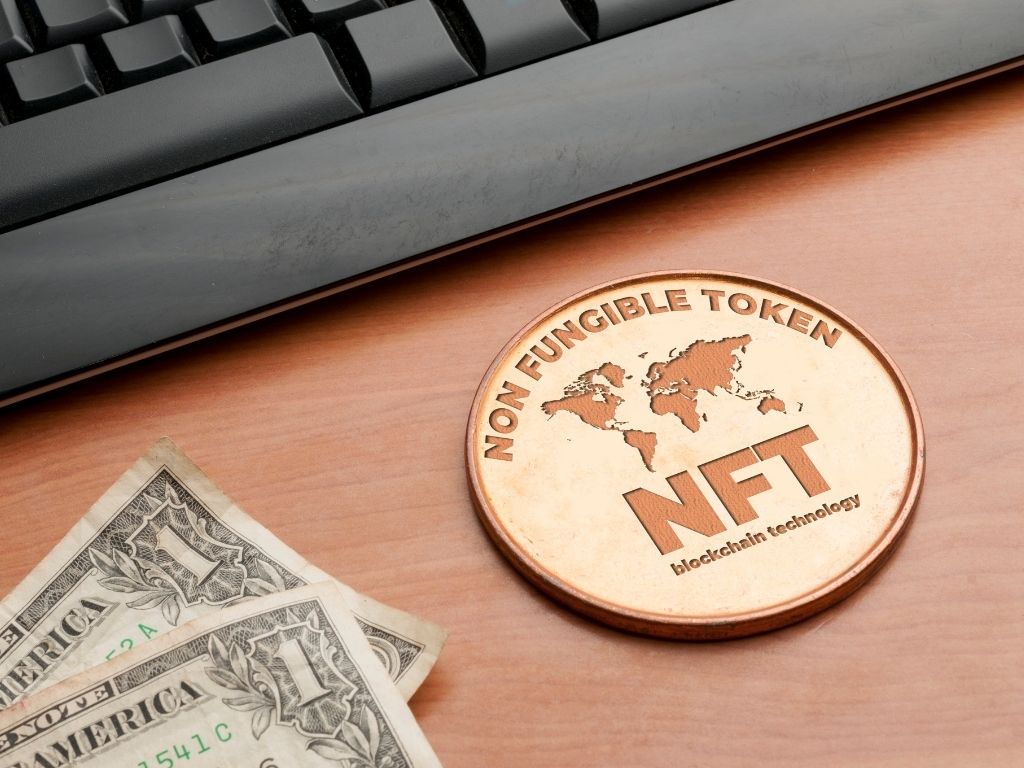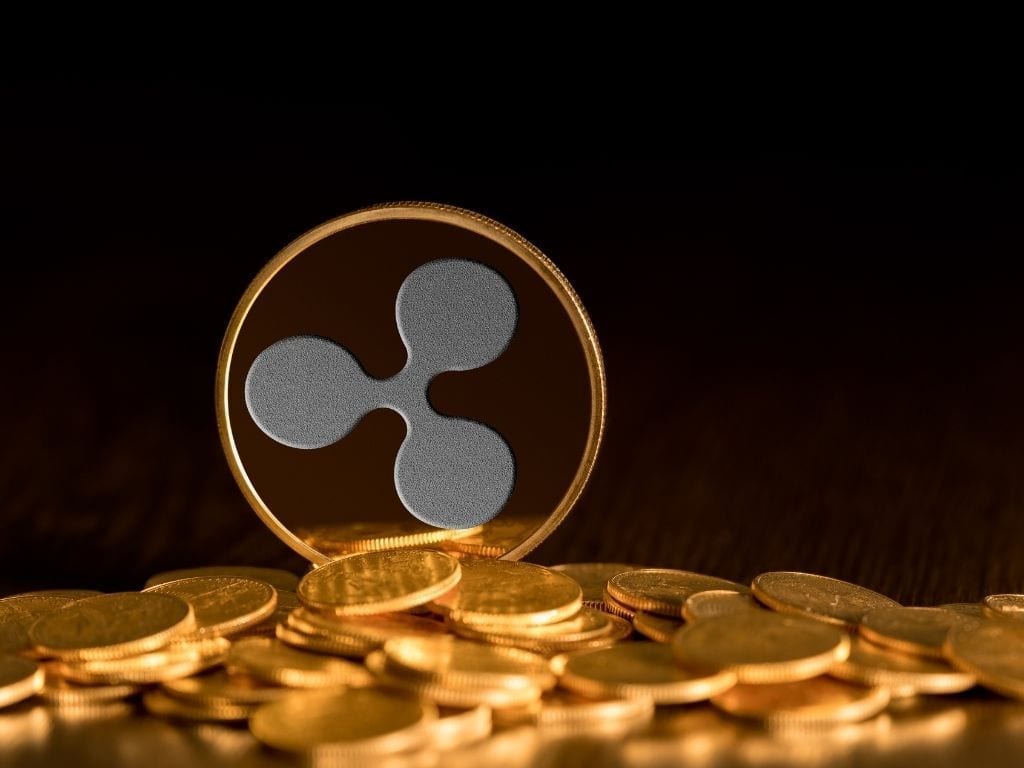What Are NFTs: Non-Fungible Tokens and Their Impact on Digital Assets
The most common question about crypto world is “What are NFTs? NFT stands for Non-Fungible Token. It is a type of digital asset that represents ownership or proof of authenticity of a unique item or piece of content. Unlike cryptocurrencies such as Bitcoin or Ethereum, which are fungible and can be exchanged on a one-to-one basis, NFTs are non-fungible, meaning each token is distinct and cannot be exchanged on a like-for-like basis.
NFTs are typically built on blockchain platforms, with Ethereum being the most commonly used blockchain for NFTs. Blockchain technology provides a decentralized and transparent ledger where ownership and transaction history of NFTs can be recorded immutably. This ensures the authenticity and provenance of the digital assets represented by NFTs.
Non-Fungible Tokens (NFTs) have emerged as a revolutionary concept in the realm of digital assets. These unique tokens, built on blockchain technology, have garnered significant attention and transformed the way we perceive ownership and value in the digital world. In this article, we will delve into the world of NFTs, exploring their definition, underlying technology, and the profound impact they have on digital assets.
The Technology Behind NFTs And Digital ownership
NFTs are built on blockchain technology, primarily leveraging Ethereum as the leading platform for their creation and transactional activities. Blockchain provides a decentralized and transparent ledger, allowing for the secure recording of ownership, transaction history, and provenance of NFTs. Smart contracts, self-executing agreements, facilitate the automatic execution of conditions, royalties, and licensing terms associated with NFTs.
One of the most significant impacts of NFTs is the democratization of digital asset ownership. With NFTs, creators and artists can establish verifiable ownership, authenticity, and provenance of their digital creations. NFTs enable direct engagement between creators and consumers, removing intermediaries and empowering artists to monetize their work directly. Additionally, NFTs introduce the concept of programmable ownership, allowing creators to earn royalties on subsequent sales or usage of their NFTs.
NFTs have opened up new avenues for the creation of digital asset marketplaces. These decentralized platforms enable the buying, selling, and trading of NFTs, fostering a vibrant and dynamic ecosystem. The emergence of NFTs has also given rise to novel economic models, such as Initial NFT Offerings (INOs) or crowdfunding campaigns that allow creators to engage with their communities and raise funds through the sale of exclusive NFTs.
Also, read – NFT-based DAOs: How NFTs are Changing the Game in Web 3.0
Transforming Digital Collectibles and Gaming
NFTs have brought about a paradigm shift in the world of digital collectibles and gaming. Through NFTs, collectors can own and trade digital items, such as virtual trading cards, in-game assets, or virtual real estate. NFTs provide provable scarcity and uniqueness, adding value to these digital collectibles and enhancing the gaming experience. NFTs have also facilitated play-to-earn models, where players can earn and monetize in-game assets through NFT ownership.
Challenges and Considerations
While NFTs have demonstrated immense potential, they also come with certain challenges and considerations. Environmental concerns related to the energy consumption of blockchain networks used for NFTs have sparked discussions about sustainability and carbon neutrality. Additionally, the market for NFTs has witnessed instances of copyright infringement and intellectual property disputes, highlighting the need for clearer regulations and standards.
I feel like people are still sleeping on how big the NFT industry can become.
Like I understand floor prices and trading volume are currently down horrendous.
But I’ve seriously never been more excited about the future of NFTs than I am right now.
— Lamboland (@LambolandNFT) May 12, 2023
The future of NFTs is promising, with ongoing innovations and advancements. The integration of NFTs with augmented reality (AR) and virtual reality (VR) technologies offers immersive and interactive experiences. Cross-chain interoperability solutions will enable seamless transfer of NFTs across different blockchain networks. Further exploration of NFT use cases, such as tokenizing real-world assets or digital identities, will expand the potential of this technology.
Top 10 changes NFTs have brought in the last few years
- Redefining Digital Ownership: NFTs have revolutionized the concept of digital ownership by providing verifiable proof of ownership and authenticity for unique digital assets, challenging traditional notions of ownership in the digital realm.
- Empowering Creators: NFTs have empowered creators, artists, and content creators to monetize their digital works directly, without relying solely on intermediaries or platforms. NFTs enable creators to retain more control over their intellectual property and establish direct connections with their audience.
- Marketplaces for Digital Art: NFTs have given rise to digital art marketplaces, providing artists with new avenues to showcase and sell their digital creations. Artists can tokenize their artwork as NFTs, allowing for provenance tracking, secure transactions, and the ability to earn royalties on secondary sales.
- Tokenization of Real-World Assets: NFTs have opened up possibilities for tokenizing real-world assets, such as real estate, collectibles, or even intellectual property rights. This allows for fractional ownership, increased liquidity, and easier transfer of ownership for traditionally illiquid assets.
- Gamification and In-Game Economies: NFTs have transformed the gaming industry by enabling the ownership and trade of in-game assets. Players can purchase, sell, and trade unique virtual items, creating vibrant in-game economies and providing opportunities for play-to-earn models.
- Digital Collectibles and Memorabilia: NFTs have revitalized the concept of digital collectibles, allowing users to collect and trade unique digital items. From virtual trading cards to limited-edition digital memorabilia, NFTs have created new markets and communities centered around digital collecting.
- Royalties and Secondary Market Benefits: NFTs introduce programmable ownership, enabling creators to earn royalties on secondary sales. This provides ongoing revenue streams for artists, ensuring they benefit from the increasing value of their artwork in the secondary market.
- Democratizing Fundraising: NFTs have expanded fundraising opportunities by offering Initial NFT Offerings (INOs) or crowdfunding campaigns. Creators can sell exclusive NFTs, granting early access or unique perks to supporters, thus democratizing fundraising and community engagement.
- Transparency and Provenance: NFTs leverage blockchain technology to provide transparent ownership records and provenance for digital assets. This creates trust and authenticity in the market, as buyers can verify the history and authenticity of the NFT they are purchasing.
- Cultural Impact and Social Tokens: NFTs have created a cultural impact, sparking conversations and debates about the value of digital art, ownership rights, and the future of creativity. Social tokens, which are NFTs representing ownership in a community or project, enable new models of participation and governance within communities.
These are just a few of the notable changes that NFTs have brought in recent years. As the technology continues to evolve and new use cases emerge, we can expect further transformations in the digital landscape and the way we perceive and interact with digital assets.
Conclusion
Non-Fungible Tokens (NFTs) have emerged as a groundbreaking innovation, reshaping the digital landscape and introducing transformative changes to the world. NFTs represent a paradigm shift in the concept of ownership, authenticity, and value in the digital realm. By leveraging blockchain technology, NFTs have revolutionized the way we perceive and interact with digital assets.
NFTs provide a mechanism for establishing verifiable ownership and authenticity for unique digital or physical assets. They have given artists, creators, and content creators newfound power to monetize their work directly, eliminating intermediaries and fostering direct engagement with their audience. This empowerment has enabled artists to retain more control over their intellectual property, ensuring that their creations are properly attributed and rewarded.
The advent of NFTs has witnessed the rise of digital art marketplaces, where artists can tokenize their artwork as NFTs, opening up new avenues for exposure and sales. These marketplaces enable secure transactions, provenance tracking, and the ability to earn royalties on secondary sales. The concept of digital art has been revitalized, blurring the lines between the physical and digital worlds.
Furthermore, NFTs have extended beyond the realm of art into various sectors, including gaming, collectibles, and even the tokenization of real-world assets. In the gaming industry, NFTs have transformed the ownership and trade of in-game assets, allowing players to buy, sell, and trade unique virtual items, thereby creating vibrant in-game economies and play-to-earn models.
The tokenization of real-world assets through NFTs has introduced fractional ownership, increased liquidity, and easier transferability of traditionally illiquid assets such as real estate or intellectual property rights. This has the potential to reshape industries and democratize access to investment opportunities.
NFTs have also brought transparency and provenance to the forefront. Leveraging the immutable nature of blockchain, NFTs provide transparent ownership records and traceability, ensuring that buyers can verify the authenticity and history of the NFTs they acquire. This trust and transparency have become essential in the digital marketplace, combating issues such as copyright infringement and counterfeit goods.
NFTs have sparked cultural conversations and debates, challenging traditional notions of value and ownership. They have given rise to new economic models, such as Initial NFT Offerings (INOs) or crowdfunding campaigns, which democratize fundraising and community engagement. NFTs have expanded the possibilities for creators and communities to participate in the ownership and governance of digital assets through social tokens.
While the advent of NFTs has brought significant changes and opportunities, challenges remain. Environmental concerns surrounding the energy consumption of blockchain networks used for NFT transactions need to be addressed. Regulation and standards are evolving to address issues such as copyright protection and intellectual property rights in the digital space.
As the NFT ecosystem continues to evolve, we can expect further advancements and innovations. Integration with emerging technologies like augmented reality (AR) and virtual reality (VR) will create immersive and interactive experiences. Cross-chain interoperability solutions will enable seamless transferability of NFTs across different blockchain networks, expanding their reach and utility.
In summary, NFTs represent a transformative force that has redefined digital ownership, enabled new economic models, and created a vibrant marketplace for unique digital assets. The impact of NFTs spans across art, gaming, collectibles, and various industries, shaping the future of creativity, ownership, and commerce in the digital age. As we witness the ongoing evolution of NFTs, it is clear that they have brought about lasting changes to the world, unlocking new possibilities and empowering creators and collectors alike.
Stay informed with daily updates from Blockchain Magazine on Google News. Click here to follow us and mark as favorite: [Blockchain Magazine on Google News].
Get Blockchain Insights In Inbox
Stay ahead of the curve with expert analysis and market updates.
latest from tech
Disclaimer: Any post shared by a third-party agency are sponsored and Blockchain Magazine has no views on any such posts. The views and opinions expressed in this post are those of the clients and do not necessarily reflect the official policy or position of Blockchain Magazine. The information provided in this post is for informational purposes only and should not be considered as financial, investment, or professional advice. Blockchain Magazine does not endorse or promote any specific products, services, or companies mentioned in this posts. Readers are encouraged to conduct their own research and consult with a qualified professional before making any financial decisions. The featured image used is just a creative depiction of the title and it does not intend to hurt sentiments of any person or institution. If it hurts anyone sentiments, please do not hesitate to reach out to Blockchain Magazine.

 Bitcoin
Bitcoin  Ethereum
Ethereum  XRP
XRP  Tether
Tether  Solana
Solana  Dogecoin
Dogecoin  USDC
USDC  Cardano
Cardano  Lido Staked Ether
Lido Staked Ether  TRON
TRON  Chainlink
Chainlink  Avalanche
Avalanche  Wrapped stETH
Wrapped stETH  Stellar
Stellar  Wrapped Bitcoin
Wrapped Bitcoin  Sui
Sui  Hedera
Hedera  Toncoin
Toncoin  Shiba Inu
Shiba Inu  WETH
WETH  Polkadot
Polkadot  Parkcoin
Parkcoin  LEO Token
LEO Token  Bitget Token
Bitget Token  Litecoin
Litecoin  Bitcoin Cash
Bitcoin Cash  Uniswap
Uniswap  Hyperliquid
Hyperliquid  Official Trump
Official Trump  Wrapped eETH
Wrapped eETH  Pepe
Pepe  USDS
USDS  NEAR Protocol
NEAR Protocol  Ethena USDe
Ethena USDe  Aave
Aave  Aptos
Aptos  Internet Computer
Internet Computer  Ondo
Ondo  Ethereum Classic
Ethereum Classic  Monero
Monero  POL (ex-MATIC)
POL (ex-MATIC)  OKB
OKB  Cronos
Cronos  Dai
Dai  Mantle
Mantle  Algorand
Algorand  Render
Render  MANTRA
MANTRA 




